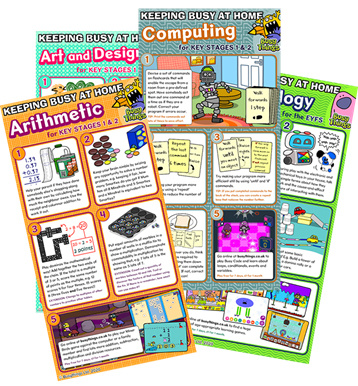
Industry News
For billions of people, 2020 has been a completely different year to any other. Almost overnight, the importance of effective digital learning materials became paramount in the education world.
As the managing director of an educational software company, and as a mother, I have been able to experience the resulting issues from both the developer’s and the consumer’s point of view.
Planning to be creative
Our small development team has been together for most of the 20-plus years the company’s been going. January is traditionally our time for planning. This year seemed full of possibilities, and although we never quite manage to develop everything in the plan, we thought this coming year would be different!
The programmers had had a ‘dry’ 2019, spending a lot of time on behind-the-scenes development – bug fixes, feature updates, management systems etc.
I hoped to get creative and make some more of the early years games that we are known for and have some fun!
We planned games that would make children laugh. In between client work, Little Chris the programmer has been making a new 3D fishing game that’s different to any game we’ve made before, and we needed to let him finish. We discussed getting an app for families into the App Store to help parents and their children access games more easily.
Change of plan in the New Year
These and other things we had planned promised a productive and creative year.
Throughout January, we watched the Covid-19 crisis in China unfolding, and it gradually dawned on us that we might need to do things differently.
Two weeks before the first lockdown we all took our computers home. I thought we could do a couple of weeks of this; Duncan The Programmer thought it could be 8 weeks. ‘Don’t be ridiculous, Duncan!’ I said.
At the start of the second week of working from home, our server ground to a halt: Busy Things usage was way beyond what it was used to, and we had to do an emergency upgrade. Not good for stress levels.
Our mobiles were taking redirected calls and they didn’t stop ringing. We started scheduling Zoom tutorials three times a day so teachers and parents could speak to us directly and so we could easily demonstrate our games.
Teachers and parents had been derailed overnight and suddenly had to find effective online solutions for teaching and learning. We were dealing with more customers than we could handle, but it was exciting to be talking to our customers, sharing their stories and helping them put their plans into practice.
Meanwhile, on the home front
As things settled down, I was able to turn my attention to my youngest son. The kitchen became our office and classroom. When I dug deeper into the communications he was getting from school, I was surprised by the low quality of some of the things he was receiving: badly formatted PowerPoint and Word documents that required little interaction and gave out no feedback.
It became obvious to me how important communication is for any kind of assignment. The teachers that my son had time for were those quick to respond with clear feedback, putting forward new work regularly with an expectation for the next lesson. The subjects where the communication was poor and work submitted was never acknowledged were soon avoided by us both.
I enjoyed seeing what he was doing and waiting for the feedback to arrive. Platforms that hosted quizzes were popular; they didn’t rely so much on teacher communication, but sound, animation and sometimes scoreboards helped with engagement.
This is no surprise: whether at school or at home children will soon lose interest in a teacher (and subject) that doesn’t mark their work or engage with them.
Good ideas for home learning
As the deadline for returning to the office remained fuzzy, January’s plans were put to one side and we began compiling a wish list of new features. The conversations we were having with Busy Things users, teachers and parents, had got us thinking.
We set about adding multiple features to support teaching effectively online. We began to think about designing a system for communication that made it easy for teachers to plan activities ahead of time, assign games and activities, view results and timelines and send individual feedback attached to specific activities. We talked about children and teachers being able to make little avatars of themselves to make communication more fun. Sending stickers with messages was another must.
On reflection none of these features are particularly ground-breaking, but if they are designed well, look good and are easy-to-use they can transform the online learning experience. Production began immediately. We drip fed the features through and by September we had finished the bulk of them.

Whilst all the new communication features were being programmed our creative side was directed into regular postings, suggesting practical ways that parents could teach a curriculum objective at home.
Learning from home means classroom resources are not to hand – from counting blocks to chemistry labs, so domestic equivalents are needed. We wanted to encourage parents and teachers not to rely too heavily on the screen. We had to think of what was ‘practical’ for parents to do at home. Ian The Artist and Teagan The Artist began a poster campaign called Busy at Home. Each poster presents a collection of curriculum-linked activities that you can do using everyday objects around the home.
Here’s to 2021
I know my family and my employees have been very lucky. So far, we have all stayed safe, kept our jobs, and Busy Things has been able to do the things we want it to.
As a mother, I feel slightly uncomfortable admitting my 12 year old enjoyed every minute of our first lockdown and has strong views on schools being exempt from the second one. For him, the summer lockdown meant being outside with a football 7 days a week.
And almost 12 months later Little Chris still hasn’t had time to finish his fishing game. But when he does, you’re really going to like it!
Learn Through Play with Busy Things! | Busy Things
Register for free
No Credit Card required
- Register for free
- Free TeachingTimes Report every month